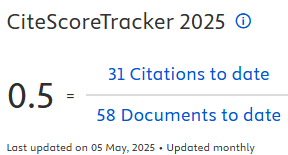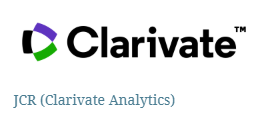Innovation in micro and small businesses: how inbound open innovation and dynamic capabilities work together to explain innovation performance
DOI:
https://doi.org/10.5585/2023.22945Keywords:
capacity, dynamic capabilities, innovation, open innovation, micro and small businessAbstract
Purpose: This study examined how inbound open innovation and dynamic capabilities (sensing, seizing, and transforming capacity) work together to explain innovation performance.
Methodology: The study used a case research method that involved interviewing ten purposively selected managers of micro and small furniture industries in Arusha, Dar es Salaam and Mbeya cities of Tanzania. Subsequently, the study used illustrative and content analysis methods to compare and align predetermined theoretical relationships on how dynamic capabilities and inbound open innovation explain innovation performance to empirical results.
Originality: The use of illustrative analysis to compare extant theoretical relationships between dynamic capabilities, inbound open innovation, and innovation performance to case studies’ processes in this study is novel to the open innovation literature. Also, the resultant conceptual framework and relationships linking inbound open innovation to innovation performance through systematic processes of dynamic capabilities are novel.
Main results: This study showed that inbound open innovation explains innovation performance through systematic complementary processes of dynamic capabilities. Moreover, the study showed that if inbound open innovation generates complex external ideas, micro and small firms adopt coupled open innovation as a predecessor of dynamic capabilities to unlock complexity.
Theoretical contributions: This study has integrated the theories of open innovation and dynamic capabilities by developing a conceptual framework and relationships that show how inbound open innovation explains innovation performance through dynamic capabilities.
Practical contributions: This study has revealed alternative combinations of dynamic capabilities that business managers need to benefit innovation performance from inbound open innovation.
Downloads
References
Aliasghar, O., Sadeghi, A. y Rose, LE (2020). Innovación de procesos en pequeñas y medianas empresas: los roles críticos del abastecimiento de conocimiento externo y la capacidad de absorción. Revista de Gestión de Pequeñas Empresas. https://www.dIA.org/10.108/00472778.2020.1844491
Almeida, F. (2021). Prácticas de innovación abierta: diversidad en las pymes portuguesas. Revista de Innovación Abierta, Tecnología, Mercados y Complejidad, 7(30), 169. https://dIA.org/10.3390/jIAtmc7030169
Bigliardi, B., Ferraro, G., Filippelli, S. y Galati, F. (2020). Modelos de innovación en la industria alimentaria: una revisión de la literatura. Revista de Gestión e Innovación Tecnológica, 15 (3), 97-108.
Bogers, M., Chesbrough, H., Heaton, H. y Teece, JD (2019). Gestión estratégica de la innovación abierta: una perspectiva de capacidades dinámicas. Revisión de la gestión de California, 62(1), 77–94. https://www.dIA.org/10.1177/0008125619885150
Cassiman, B. y Valentini, G. (2016). Innovación abierta: ¿Son realmente complementarios los flujos de conocimiento entrantes y salientes? Revista de gestión estratégica, 37, 1034-1046. https://www.dIA:10.1002/smj.2375
Chabbouh, H. y Boujelbene, Y. (2022). Innovación abierta, capacidades organizativas dinámicas y desempeño innovador en las pymes: evidencia empírica en la industria manufacturera tunecina. Revista Internacional de Emprendimiento e Innovación, 0(0), 1-13. https://dIA.org/10.1177114657503211066014
Chesbrough, H. (2003). Innovación abierta: El nuevo imperativo para crear y sacar provecho de la tecnología. Prensa empresarial de Harvard.
Chesbrough, H. y Bogers, M. (2014). Explicando la innovación abierta: aclarando un paradigma emergente para comprender la innovación. En H. Chesbrough, W. Vanhaverbeke y J. West (Edns.). Nuevas fronteras en la innovación abierta (págs. 3–28). Prensa de la Universidad de Oxford.
Chiu, W., Chi, H., Chang, Y. y Chen, M. (2016). Capacidades dinámicas y rendimiento de innovación radical en empresas establecidas: un modelo estructural. Análisis Tecnológico y Gestión Estratégica, 28 (8), 965-978. https://www.dIA.org/10.1080/09537325.2016.1181735
Creswell, WJ (2009) Diseño de investigación: enfoques de métodos cualitativos, cuantitativos y mixtos (3ª ed.). Publicaciones sabias inc.
Damanpour, F., Sánchez-Henríquez, F. y Chiu, H. H. (2018). Fuentes internas y externas y la adopción de innovaciones en las organizaciones. Revista británica de gestión, 29(4), 712-730. https://www.dIA.org/10.1111/1467-8551.12296
D'Ambrossio, A., Gabriele, R., Schiavone, F., & Villasalero, M. (2017). El papel de la apertura en la explicación del desempeño de la innovación en un contexto regional. Revista de Transferencia de Tecnología, 42, 389 - 408. https://www.dIA.10.1007/s10961-016-9501-8
de Aro, RE, & Pérez, G. (2021). Identificación de capacidades dinámicas en innovación abierta. Revisión de Innovación y Gestión, 18 (2), 113-128. https://www.dIA.org/10.1108/INMR-10-2019-0120
Denscombe, M. (2007). La buena guía de investigación para proyectos de investigación social a pequeña escala (3ª ed.). Prensa de la Universidad Abierta de Berkshire.
Expósito, A., Fernández-Serrano, J., & Linan, F. (2019). El impacto de la innovación abierta en los resultados de innovación de las pymes: nueva evidencia empírica desde un enfoque multidimensional. Revista de Gestión del Cambio Organizacional, 32(5), 558-577. https://www.dIA.org/10.1108/JOCM-09-2018-0253
Filiou, D. (2020). Una nueva perspectiva sobre la innovación abierta: empresas de tecnología nuevas y establecidas en productos biofarmacéuticos del Reino Unido, R&D Management, 51 (1), 73-86.
Flor, LM, Cooper, YS y Oltra, JM (2017). Búsqueda de conocimiento externo, capacidad de absorción e innovación radical en empresas de alta tecnología. Revista de gestión europea, 1-12. https://www. dIA.org/10.1016/j.emj.2017.08.003
Francis, JJ, Johnston, M., Robertson, C., Glidewell, L., Entwistle, V., Eccles, PM y Grimshaw, MJ (2009). ¿Qué es un tamaño de muestra adecuado? Operacionalización de la saturación de datos para estudios de entrevistas basadas en la teoría, Psychology & Health, 1-17. http://dx.dIA.org/10.1080/08870440903194015
Gassmann, O. y Enkel, E. (2004). Hacia una teoría de la innovación abierta: tres arquetipos de procesos centrales. Actas de la Conferencia de Gestión de I+D (RADMA), Lisboa, Portugal, 6-9 de julio de 2004.
Gassmann, O., Enkel, E. y Chesbrough, H. (2009). El futuro de la innovación abierta. Gestión de Investigación y Desarrollo, 40(3), 213-221.
Giniuniene, J. y Jurksiene, L. (2015). Capacidades dinámicas, innovación y aprendizaje organizacional: interrelaciones e impacto en el desempeño empresarial. Procedia-Ciencias Sociales y del Comportamiento, 213, 985-999.
Greco, M., Grimaldi, M. y Cricelli, L. (2016). Un análisis del efecto de la innovación abierta en el desempeño de las empresas. Gestión Europea Innovación, 34, 501-516. http://dx.dIA.org/10.1016/j.emj.2016.02.008
Grimaldi, M., Quinto, I. y Rippa, P. (2013). Habilitación de la innovación abierta en pequeñas y medianas empresas: un enfoque de capacidades dinámicas. Gestión del Conocimiento y Procesos, 20 (4), 199-210. https://www.dIA.org/10.1002/kpm.1423
Hinteregger, C., Durst, S., Temel, S. y Yesilay, BR (2018). El impacto de la apertura en la innovación en las pymes. Revista Internacional de Gestión de la Innovación, 23 (01), 1-30. https://www.dIA.org/10.1142/S1363919619500038
Hodgkinson, PG y Healey, PM (2011). Fundamentos psicológicos de las capacidades dinámicas: Reflexión y reflexión en la dirección estratégica. Revista de gestión estratégica, 32, 1500-1516. https://www.dIA:10.1002/smj.964
Hutton, S., Demir, R. y Eldridge, S. (2021). ¿Cómo contribuye la innovación abierta a las capacidades dinámicas de la empresa? Tecnonovación, 106, 1-15. https://dIA.org/10.1016/j.technovation.2021.102288
Kindstrom, D., Kowalkowski, C., Sandberg, E. (2013). Habilitación de la innovación de servicios: un enfoque de capacidades dinámicas. Revista de Investigación Empresarial, 66, 1063-1073.
Kraus, S., Kailer, N., Dorfer, J. y Jones, P. (2020). Innovación abierta en pymes (jóvenes). El Revista Internacional de Emprendimiento e Innovación, 21 (1), 47-59. https://www.do.org/10.1177/1465750319840778
Kump , B., Engelmann , A., Kessler , A. y Schweiger , C. (2019). Hacia una escala de capacidades dinámicas: Medición de las capacidades organizacionales de detección, captura y transformación. Cambio Industrial y Corporativo, 28(5), 1149-1172. https://dIA:10.1093/icc/dty054
Laursen, K. y Salter, A. (2006). Abierto a la innovación: el papel de la apertura en la explicación del desempeño de la innovación entre las empresas manufactureras del Reino Unido. Revista de gestión estratégica, 27, 131-150. https://www.dIA.org/10.1002/smj.507
Leitao, J., Pereira, D. y Brito, d. S. (2020). Prácticas entrantes y salientes de innovación abierta y ecIAnnovación: contraste de empresas bioeconómicas y no bioeconómicas. Revista de Innovación Abierta: Tecnología, Mercado y Complejidad, 6 (145), 1-34. https://www.dIA:10.3390/jIAtmc6040145
Maxwell, AJ (2004). Uso de métodos cualitativos para la explicación causal. Métodos de campo, 16 (3), 243–264.
Mazzola, E., Bruccoleri, M. y Perrone, G. (2016). Innovación abierta y desempeño de las empresas: estado del arte y evidencias empíricas de la industria biofarmacéutica. Revista Internacional de Gestión de Tecnología, 70(2/3), 109-134.
Min, S. y Kim, J. (2021). Efecto de la capacidad de aprovechar oportunidades en el desarrollo de nuevos mercados y el rendimiento de las pequeñas y medianas empresas: el papel de la incertidumbre ambiental en la industria de TI. Revisión de la gestión de Asia Pacífico, 27 (2), 69-79. https://dIA.org/10.1016/j.apmrv.2021.05.004
Moen, Ø., Tvedten, T. y Wold, A. (2018). Exploración de la relación entre la competencia y la innovación en las pymes noruegas, Cogent Business & Management, 5 (1), 1-15. https://dIA.org/10.1080/23311975.2018.1564167
Neuman, LW (2014). Métodos de investigación social: enfoques de investigación cualitativos y cuantitativos (7ª ed .). Pearson Educación limitada.
Niederman, F., Muller, B. y March, TS (2018). Uso de la teoría de procesos para acumular conocimiento de gestión de proyectos: un modelo de siete categorías. Revista de gestión de proyectos, 49 (1), 6-24.
Ovuakporie, DO, Pillai, GK, Wang, C. y Wei, Y. (2021). Efectos moderadores diferenciales de la reconfiguración estratégica y operativa en la relación entre las prácticas de innovación abierta y el desempeño de la innovación. Política de investigación, 50, 1-17. https://dIA.org/10.1016/j.respol.2020.104146
Pihlajamaa, M. (2021). ¿Qué significa estar abierto? Una tipología de estrategias de innovación abierta entrante y sus requisitos de capacidad dinámica. Innovación: Organización y Gestión, 25 (1), 1-24. https://dIA.org/10.1080/14479338.2021.1907192
Pundziene, A. , Nikou, S. y Bouwman, H. (2021). El nexo entre las capacidades dinámicas y el desempeño competitivo de la empresa: el papel mediador de la innovación abierta. Revista Europea de Gestión de la Innovación , 25 (6), 152-177. https://dIA.org/10.1108/EJIM-09-2020-0356
Rangus, K., Drnovsek, M., Di Minin, A. y Spithoven, A. (2017). El papel de la innovación abierta y la capacidad de absorción en el desempeño de la innovación: Evidencia empírica de Eslovenia. Revista de estudios de gestión de Europa del Este, 22 (1), 39-62. https://www.dIA:10.5771/1862-0019-2017-1-1
Roper, S., Lovea, HJ, Bonner, K. (2017). Búsqueda de conocimiento de las empresas y externalidades del conocimiento local en el desempeño de la innovación. Política de investigación, 46 (1), 43-56.
Sandelowski, M. (1998). Escribir una buena lectura: estrategias para representar datos cualitativos. Investigación en Enfermería y Salud, 21, 375-382.
Saunders, M., Lewis, P. y Thornhill, A. (2009). Métodos de investigación para estudiantes de negocios (5ª ed .). Pearson Educación limitada.
Saunila, M. (2020). Capacidad de innovación en las PYMES: Una revisión sistemática de la literatura. Revista de Innovación y Conocimiento, 5, 260-265. https://dIA.org/10.1016/j.jik.2019.11.002
Schilke, O., Hu, S. y Helfat, CE (2018). Quo vadis, capacidades dinámicas? Una revisión analítica de contenido del estado actual del conocimiento y recomendaciones para futuras investigaciones. Academia de Anales de Gestión, 12 (1), 390-439. https://dIA.org/10.5465/annals.2016.0014
Skocpol, T. (1984). Agendas emergentes y estrategias recurrentes en sociología histórica. En T. Skocpol (edn.), Visión y método en sociología histórica (págs. 356–392). Prensa de la Universidad de Cambridge.
Teece, J. D. (2007). Explicando las capacidades dinámicas: la naturaleza y los microfundamentos del desempeño empresarial sostenible. Revista de Gestión Estratégica, 28 (13), 1319-1350. https://www.dIA.org/10.1002/smj.640
Teece, J. D. (2017). Hacia una teoría de la capacidad de las empresas innovadoras: implicaciones para la gestión y la política. Revista de economía de Cambridge, 41, 693-720. https://www.dIA.org/10.1093/cje/bew063
Teece, J. D. (2020). Mano a mano: innovación abierta y el marco de capacidades dinámicas. Revisión de gestión estratégica , 1 (2), 233–253. https://dIA.org/10.1561/111.00000010
Teece, J. D., Pisano, G. y Shuen, A. (1997). Capacidades dinámicas y administración estratégica. Revista de Gestión Estratégica, 18 (7), 509-533.
República Unida de Tanzanía (2003). Tanzania SME Development Policy of 2003. Dar es Salaam: Ministerio de Industria y Comercio.
Vanhaverbeke, W. (2017). Gestión de la innovación abierta en las pymes. Prensa de la Universidad de Cambridge.
Vanhaverbeke, W. y Cloodt, M. (2014). Teorías de la empresa e innovación abierta. En H. Chesbrough, W. Vanhaverbeke y J. West (Edns.). Nuevas fronteras en la innovación abierta (págs. 256–278). Prensa de la Universidad de Oxford.
van Lieshout, J. WFC, van der Velden, JM , Blomme, RJ y Peters, P. (2021). La interrelación de la ambidestreza organizacional, las capacidades dinámicas y la innovación abierta: un modelo conceptual hacia una ventaja competitiva. Revista Europea de Estudios de Gestión , 26(2/3), 39-62. https://www.dIA.org/10.1108/EJMS-01-2021-0007
West, J. y Bogers, M. (2017). Innovación abierta: estado actual y oportunidades de investigación. Innovación: Organización y Gestión, 19 (1), 43-50. http://dx.dIA.org/10.1080/14479338.2016.1258995
Yin, KR (2018). Investigación y aplicaciones de estudios de caso: diseño y métodos (6 ed). Thousand Oaks, California: SAGE Publications Inc.
Downloads
Published
How to Cite
Issue
Section
License
Copyright (c) 2023 Yohana Jacob Sesabo, Mushumbusi Paul Kato, Chao James Emmanuel

This work is licensed under a Creative Commons Attribution-NonCommercial-ShareAlike 4.0 International License.
- Abstract 650
- PDF 406
- PDF (Español (España)) 240











